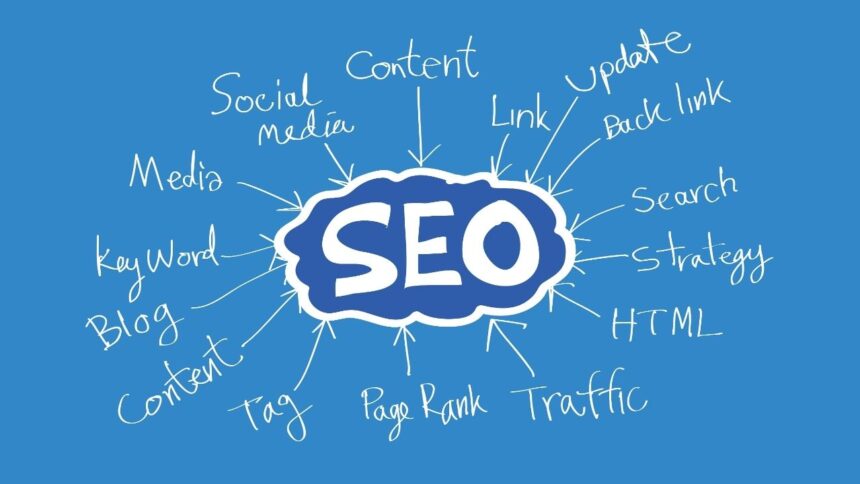In the world of digital marketing, Search Engine Optimization (SEO) has become an essential component of any successful online strategy. As more and more businesses compete for visibility on the internet, understanding how to improve your website’s SEO is more critical than ever.
One of the most important aspects of SEO is on-page optimization. By mastering on-page SEO, you can ensure that your website’s content and HTML are properly optimized for higher rankings in search engine results pages (SERPs).
This comprehensive guide will delve into the essentials of on-page SEO, helping you optimize both your content and HTML to boost your website’s performance. Whether you’re a seasoned marketer or just starting, mastering on-page SEO will significantly enhance your website’s visibility, driving more organic traffic and improving your chances of monetization through platforms like Google AdSense.
What is On-Page SEO?
Before we dive into the specifics of optimization, let’s first define what on-page SEO entails. On-page SEO refers to the techniques used to optimize individual web pages in order to rank higher and earn more relevant traffic in search engines. Unlike off-page SEO, which involves activities like link-building, on-page SEO focuses solely on optimizing content and HTML elements within the web page itself.
On-page SEO includes both the content displayed to users and the hidden HTML code behind the scenes. The goal is to create content that is not only valuable to readers but also well-structured in a way that search engines can easily interpret and rank.
The Importance of On-Page SEO
Effective on-page SEO has several key benefits that can help elevate your website’s rankings:
- Improved Search Engine Rankings: Properly optimized pages have a higher chance of ranking for relevant keywords, attracting more organic traffic.
- Enhanced User Experience: A well-optimized website provides a better experience for users, which can lead to longer time spent on the site and higher engagement.
- Faster Indexing: With a clean and optimized HTML structure, search engines can crawl your site more efficiently, ensuring that your content gets indexed quickly.
- Higher Conversion Rates: By providing useful, high-quality content that is easy to find, your chances of converting visitors into customers or leads increase significantly.
Now that you understand the importance of on-page SEO, let’s explore the key elements that you need to focus on to achieve the best possible results.
1. Keyword Research: The Foundation of SEO
Effective SEO begins with keyword research. Keywords are the terms that users type into search engines when they are looking for information. By targeting the right keywords, you can attract a more relevant audience to your website.
To start, you’ll need to conduct thorough keyword research to find terms and phrases related to your topic that have a high search volume but relatively low competition. There are several tools available for this, including Google Keyword Planner, Ahrefs, and SEMrush. These tools provide insights into keyword trends, search volume, and competition, helping you make informed decisions about which keywords to target.
Once you’ve identified the right keywords, it’s crucial to integrate them naturally into your content and HTML. However, avoid keyword stuffing, which can lead to penalties from search engines. Instead, focus on creating content that is both informative and optimized for your target keywords.
2. Crafting High-Quality, Engaging Content
Content is king when it comes to SEO. Without high-quality content, even the most optimized HTML will not be enough to help your site rank well. High-quality content is informative, engaging, and valuable to your audience. When creating content, always prioritize the needs of your audience.
Here are some key strategies for creating high-quality content:
Use Engaging Titles and Meta Descriptions

The title tag and meta description are often the first elements that users see in search engine results. These elements play a crucial role in attracting clicks to your page. Your title tag should be concise, relevant, and include your target keyword. Aim for a length of around 60 characters so that the entire title appears in search results.
The meta description, while not directly influencing rankings, can improve your click-through rate (CTR). Write a compelling meta description that includes your target keyword and clearly describes the content of your page. Keep it under 160 characters for optimal display in search results.
Create Informative and Well-Structured Content
Your content should be easy to read and structured in a way that allows users to quickly find the information they’re looking for. Use short paragraphs, subheadings, and bullet points to break up the text and make it more digestible.
It’s also essential to include relevant and authoritative information. Link to trusted sources to back up your claims, and aim to provide the most comprehensive answer to the user’s query. The more value you provide, the more likely your content will be shared and linked to by others, which can positively impact your rankings.
Optimize Content for User Intent
Google has become increasingly focused on user intent, meaning that it aims to provide search results that match what the user is actually looking for. When creating content, think about the user’s intent behind the search query. Are they looking for information, products, services, or something else?
Understanding user intent helps you create content that matches the needs of your audience, leading to higher engagement and improved rankings. Use keyword variations and related terms that address different aspects of the topic to ensure your content covers the full scope of user intent.
Use Internal and External Links
Linking is an important aspect of on-page SEO. Internal links help users navigate your website and allow search engines to crawl and index your pages more effectively. Make sure to link to other relevant content on your website, which not only improves SEO but also enhances the user experience by providing additional valuable resources.
External links to authoritative sources can also improve the credibility of your content. Make sure the sources you link to are reputable and relevant to your topic.
3. HTML Elements: Optimizing Your Website’s Structure
While content is crucial, HTML optimization plays a key role in ensuring that search engines can properly crawl and index your site. Properly optimizing HTML elements is essential for ranking higher in search engine results.
Title Tags and Meta Tags
The title tag is one of the most important HTML elements for SEO. It appears in the browser tab and search engine results, making it a vital part of attracting visitors. The title tag should be unique for each page, relevant to the content, and contain your target keyword.
Meta tags, including the meta description, provide additional information about the page. While the meta description doesn’t directly impact rankings, it can influence click-through rates. Include relevant keywords in your meta description to improve its effectiveness.
Header Tags (H1, H2, H3)
Header tags, such as H1, H2, and H3, help organize your content and signal to search engines the hierarchy of information on the page. The H1 tag should be reserved for the main title of the page and should include your primary keyword. Use H2 and H3 tags for subheadings to break down your content into digestible sections.
Proper use of header tags not only helps with SEO but also makes your content easier for readers to follow, which can improve engagement and reduce bounce rates.
Image Optimization
Images can significantly enhance the user experience, but they can also affect your website’s load speed if not optimized correctly. Large, uncompressed images can slow down your site, which can negatively impact your rankings.
To optimize images for SEO, make sure to:
- Use descriptive file names and alt text that include relevant keywords.
- Compress images to reduce their file size without sacrificing quality.
- Ensure that images are responsive, meaning they display correctly on all devices.
URL Structure
A clean and descriptive URL structure is essential for SEO. URLs should be short, descriptive, and include relevant keywords. Avoid using long, complex URLs with unnecessary parameters. For example, instead of a URL like www.example.com/page?id=12345, use a URL like www.example.com/seo-tips.
Including keywords in your URL not only helps with SEO but also makes it easier for users to understand what the page is about.
4. Mobile Optimization
In today’s mobile-first world, it’s essential that your website is fully optimized for mobile devices. Google now uses mobile-first indexing, which means that the mobile version of your website is used for ranking and indexing purposes.
To ensure your website is mobile-friendly, consider the following:
- Use a responsive design that automatically adjusts to different screen sizes.
- Ensure that fonts are readable without the need for zooming.
- Make sure buttons and links are easy to click on mobile devices.
- Optimize images and media for faster loading times on mobile.
Mobile optimization is a key ranking factor for search engines and plays a crucial role in the user experience. A site that’s not optimized for mobile can suffer from higher bounce rates and lower rankings.
5. Page Load Speed
Page load speed is another critical factor for on-page SEO. Slow-loading pages can result in a poor user experience and higher bounce rates. Google has stated that page load speed is a ranking factor, and with good reason: users expect fast-loading pages.
To improve your site’s load speed:
- Compress images and other media files.
- Minimize the use of heavy JavaScript or CSS files.
- Use browser caching to speed up repeat visits.
- Consider using a Content Delivery Network (CDN) to serve your content from multiple locations.
A fast-loading website is essential for both SEO and user satisfaction. Investing in improving your site’s speed can yield long-term benefits.
Conclusion
Mastering on-page SEO is an ongoing process that requires a combination of quality content, well-structured HTML, and technical optimization. By focusing on the key elements discussed in this guide, such as keyword research, content creation, HTML optimization, and mobile responsiveness, you can significantly improve your website’s rankings and drive more organic traffic.
Remember that SEO is not a one-time task but a continuous effort. Regularly updating your content, monitoring your site’s performance, and adapting to new SEO trends will help you stay ahead of the competition and maintain high rankings in search engine results.
If you’re looking to monetize your website through platforms like Google AdSense, implementing effective on-page SEO strategies is a crucial step in ensuring that your content is visible to the right audience. By mastering the art of on-page SEO, you’ll be setting your website up for long-term success and growth in the competitive online space.

